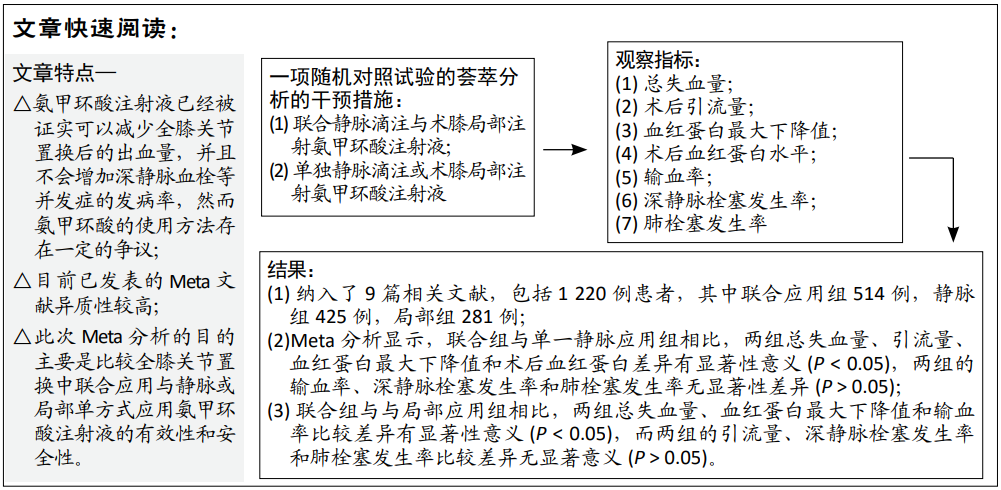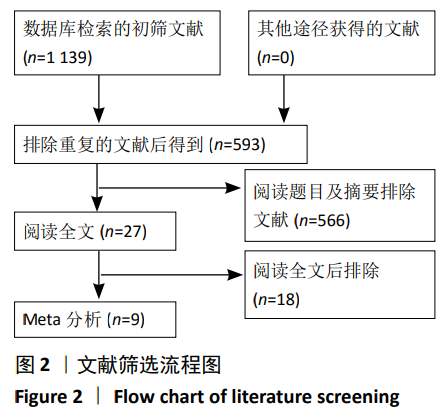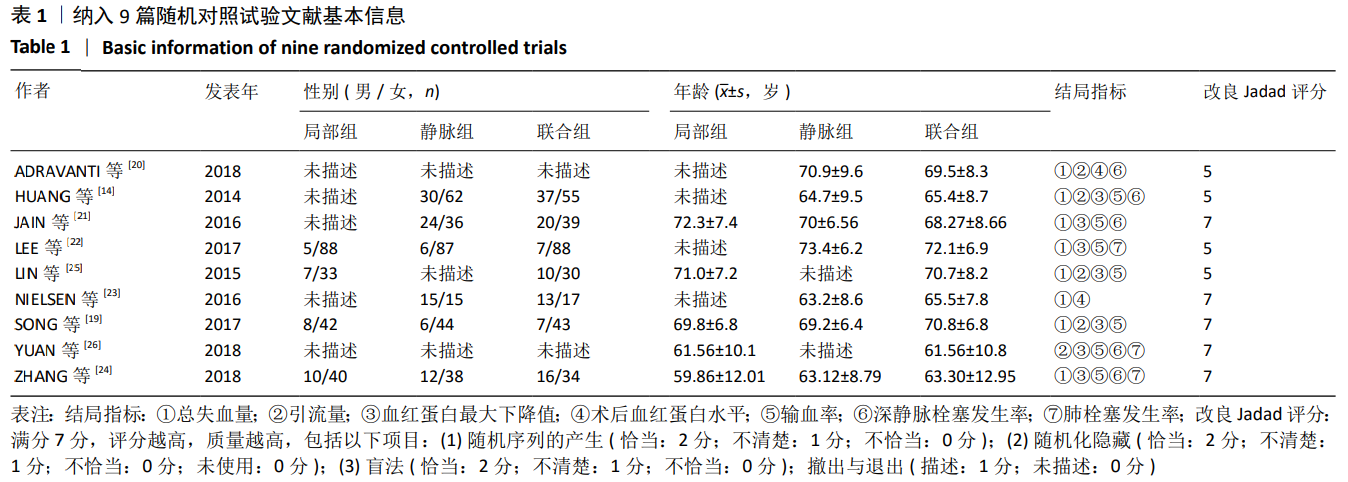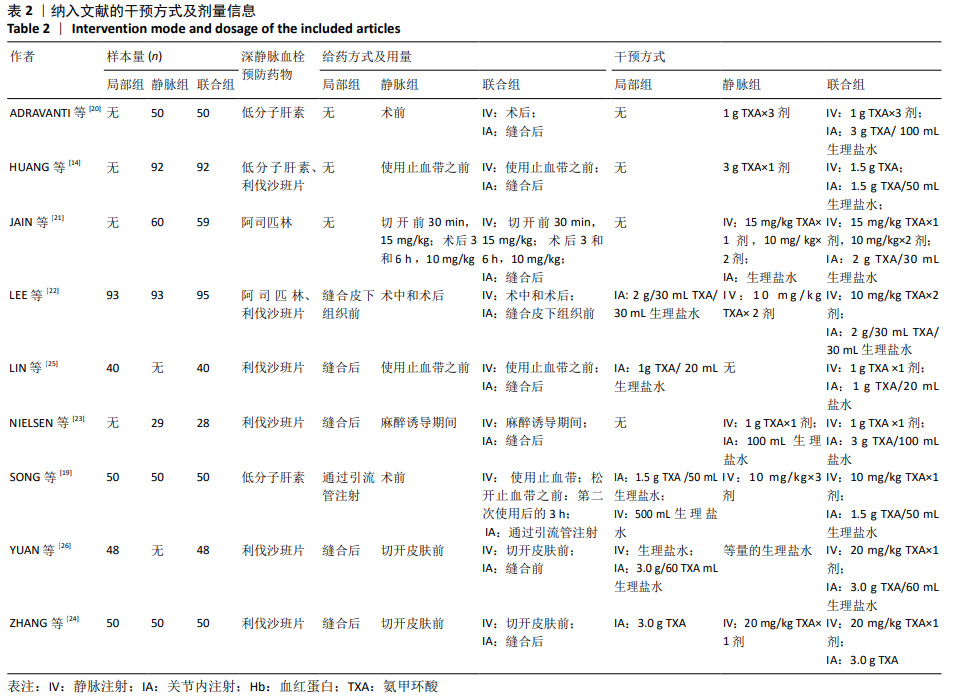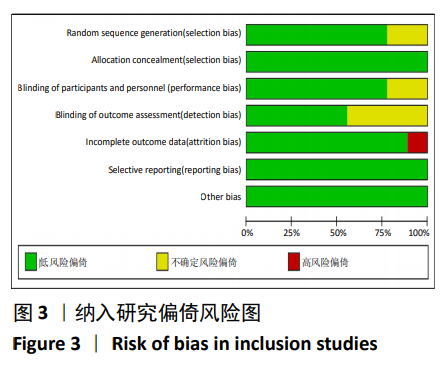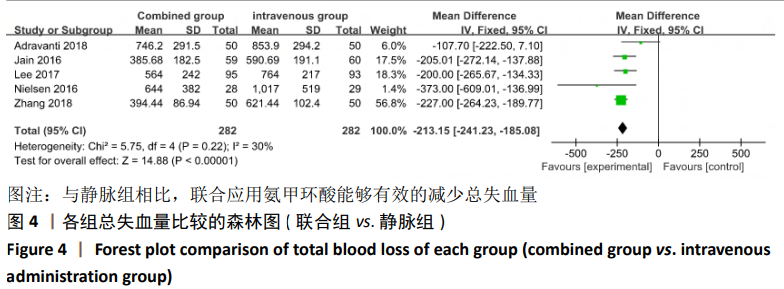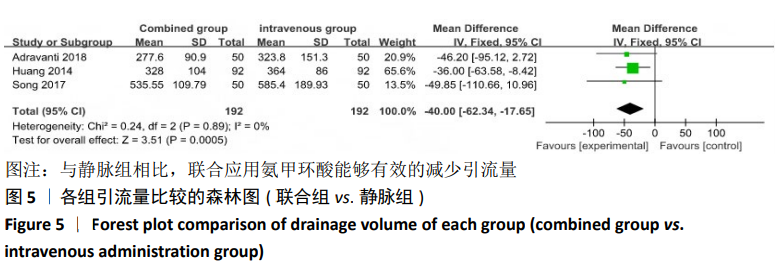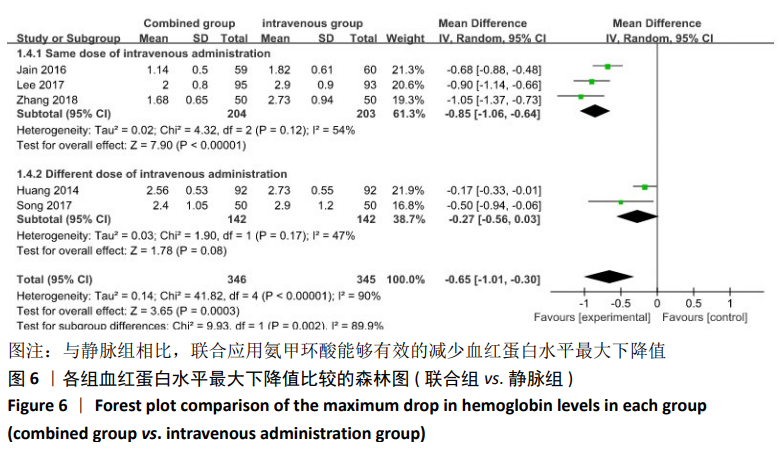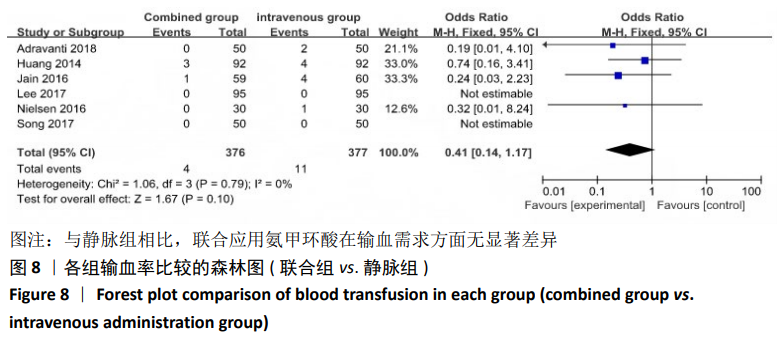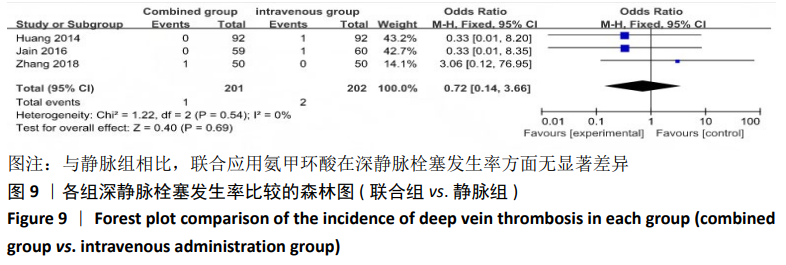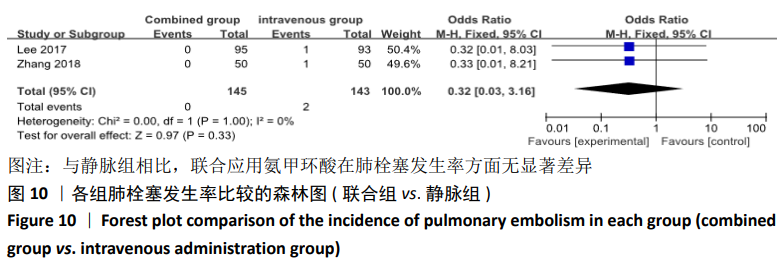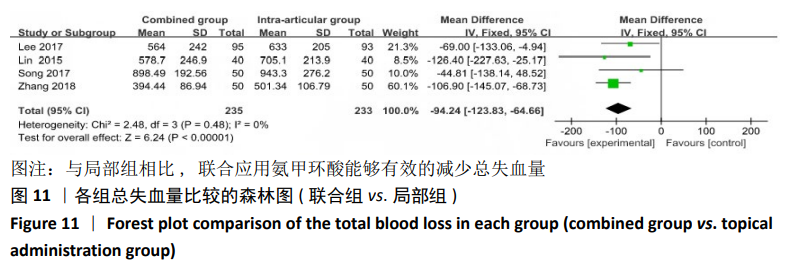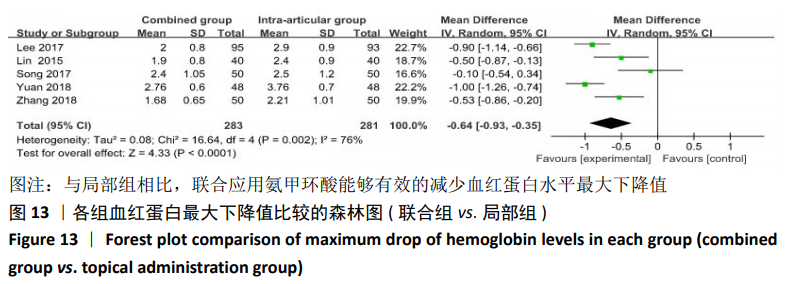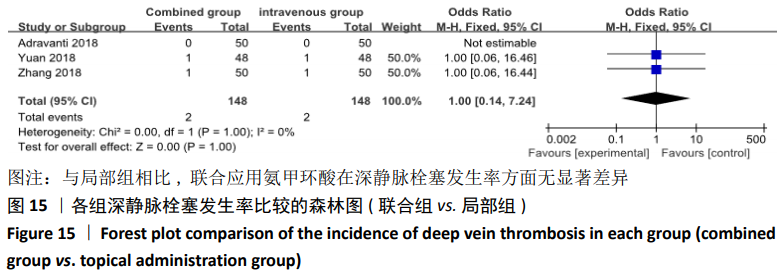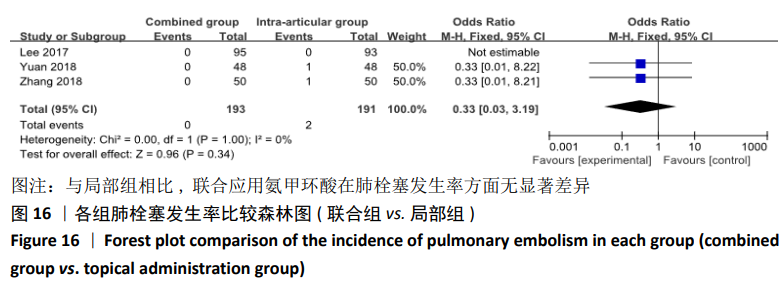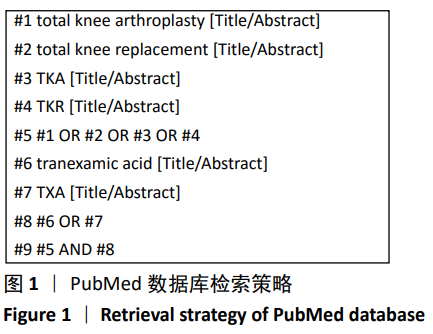[1] KURTZ S, ONG K, LAU E, et al. Projections of primary and revision hip and knee arthroplasty in the United States from 2005 to 2030. J Bone Joint Surg Am. 2007; 89(4):780-785.
[2] KIM DH, LEE GC, LEE SH, et al. Comparison of blood loss between neutral drainage with tranexamic acid and negative pressure drainage without tranexamic acid following primary total knee arthroplasty. Knee Surg Relat Res. 2016;28(3):194-200.
[3] SEOL YJ, SEON JK, LEE SH, et al. Effect of tranexamic acid on blood loss and blood transfusion reduction after total knee arthroplasty. Knee Surg Relat Res. 2016; 28(3):188-193.
[4] LEIGHEB M, POGLIACOMI F, BOSETTI M, et al. Postoperative blood salvage versus allogeneic blood transfusion in total knee and hip arthroplasty: a literature review. Acta Biomed. 2016;87(1):6-14.
[5] SCHREIBER GB, BUSCH MP, KLEINMAN SH, et al. The risk of transfusion-transmitted viral infections. The Retrovirus Epidemiology Donor Study. N Engl J Med. 1996;334(26):1685-1690.
[6] LIU D, DAN M, MARTINEZ MS, et al. Blood Management Strategies in Total Knee Arthroplasty. Knee Surg Relat Res. 2016; 28(3):179-187.
[7] SAMUJH C, FALLS TD, WESSEL R, et al. Decreased blood transfusion following revision total knee arthroplasty using tranexamic acid. J Arthroplasty. 2014;29(9):182-185.
[8] SHIMIZU M, KUBOTA R, NASU M, et al. The influence of tourniquet during total knee arthroplasty on perioperative blood loss and postoperative complications. Jpn J Anesthesiol. 2016;65(2):131-135.
[9] FU Y, SHI ZG, HAN B, et al. Comparing efficacy and safety of 2 methods of tranexamic acid administration in reducing blood loss following total knee arthroplasty: a meta-analysis. Medicine. 2016;95(50):e5583.
[10] WANG SQ, GAO XX, AN Y. Topical versus intravenous tranexamic acid in total knee arthroplasty: a meta-analysis of randomized controlled trials. Int Orthop. 2017;41(4):739-748.
[11] CHAROENCHOLVANICH K, SIRIWATTANASAKUL P. Tranexamic acid reduces blood loss and blood transfusion after TKA: a prospective randomized controlled trial. Clin Orthop Relat Res. 2011;469(10):2874-2880.
[12] TAN J, CHEN H, LIU Q, et al. A meta-analysis of the effectiveness and safety of using tranexamic acid in primary unilateral total knee arthroplasty. J Surg Res. 2013;184(2):880-887.
[13] WONG J, ABRISHAMI A, EL BEHEIRY H, et al. Topical application of tranexamic acid reduces postoperative blood loss in total knee arthroplasty: a randomized, controlled trial. J Bone Joint Surg Am. 2010; 92(15):2503-2513.
[14] HUANG Z, MA J, SHEN B, et al. Combination of intravenous and topical application of tranexamic acid in primary total knee arthroplasty: a prospective randomized controlled trial. J Arthroplasty. 2014;29(12): 2342-2346.
[15] MACHIN JT, BATTA V, SOLER JA, et al. Comparison of intra-operative regimes of tranexamic acid administration in primary total hip replacement. Acta Orthop Belg. 2014;80(2):228-233.
[16] WU YG, ZENG Y, YANG TM, et al. The efficacy and safety of combination of intravenous and topical tranexamic acid in revision hip arthroplasty: a randomized, controlled trial. J Arthroplasty. 2016;31(11):2548-2553.
[17] XIE J, MA J, YUE C, et al. Combined use of intravenous and topical tranexamic acid following cementless total hip arthroplasty: a randomised clinical trial. Hip int. 2016; 26(1):36-42.
[18] YI Z, BIN S, JING Y, ZONGKE Z, et al. Tranexamic acid administration in primary total hip arthroplasty: a randomized controlled trial of intravenous combined with topical versus single-dose intravenous administration. J Bone Joint Surg Am. 2016;98(12):983-991.
[19] SONG EK, SEON JK, PRAKASH J, et al. Combined administration of IV and topical tranexamic acid is not superior to either individually in primary navigated TKA. J Arthroplasty. 2017;32(1):37-42.
[20] ADRAVANTI P, DI SE, CALAFIORE G, et al. A prospective, randomized, comparative study of intravenous alone and combined intravenous and intraarticular administration of tranexamic acid in primary total knee replacement. Arthroplasty Today. 2018;4(1):85-88.
[21] JAIN NP, NISTHANE PP, SHAH NA. Combined administration of systemic and topical tranexamic acid for total knee arthroplasty: can it be a better regimen and yet safe? A Randomized Controlled Trial. J Arthroplasty. 2016;31(2):542-547.
[22] LEE SY, CHONG S, BALASUBRAMANIAN D, et al. What is the Ideal Route of Administration of Tranexamic Acid in TKA? A Randomized Controlled Trial. Clin Orthop Relat Res. 2017;475(8):1987-1996.
[23] NIELSEN CS, JANS Ø, ØRSNES T, et al. Combined intra-articular and intravenous tranexamic acid reduces blood loss in total knee arthroplasty: a randomized, double-blind, placebo-controlled trial. J Bone Joint Surg Am. 2016;98(10):835-841.
[24] ZHANG YM, YANG B, SUN X, et al. Combined intravenous and intra-articular tranexamic acid administration in total knee arthroplasty for preventing blood loss and hyperfibrinolysis: a randomized controlled trial. Medicine. 2019;98(7):e14458.
[25] LIN SY, CHEN CH, FU YC, et al. The efficacy of combined use of intraarticular and intravenous tranexamic acid on reducing blood loss and transfusion rate in total knee arthroplasty. J Arthroplasty. 2015;30(5):776-780.
[26] YUAN X, WANG J, WANG Q, et al. Synergistic effects of intravenous and intra-articular tranexamic acid on reducing hemoglobin loss in revision total knee arthroplasty: a prospective, randomized, controlled study. Transfusion. 2018;58(4):982-988.
[27] ROSSAINT R, BOUILLON B, CERNY V, et al. The European guideline on management of major bleeding and coagulopathy following trauma: fourth edition. Crit Care. 2016;20:100.
[28] KOZEK-LANGENECKER SA, AFSHARI A, ALBALADEJO P, et al. Management of severe perioperative bleeding: guidelines from the european society of anaesthesiology. Eur J Anaesthesiol. 2013;30(6):270-382.
[29] FERRARIS VA, BROWN JR, DESPOTIS GJ, et al. 2011 update to the Society of Thoracic Surgeons and the Society of Cardiovascular Anesthesiologists blood conservation clinical practice guidelines. Ann Thoracic Surg. 2011;91(3):944-982.
[30] YIN D, DELISLE J, BANICA A, et al. Tourniquet and closed-suction drains in total knee arthroplasty. No beneficial effects on bleeding management and knee function at a higher cost. Orthop Traumatol Surg Res. 2017;103(4):583-589.
[31] LUNEBOURG A, PARRATTE S, OLLIVIER M, et al. Are revisions of unicompartmental knee arthroplasties more like a primary or revision TKA? J Arthroplasty. 2015;30(11): 1985-1989.
[32] CHANG CW, LAN SM, TAI TW, et al. An effective method to reduce ischemia time during total knee arthroplasty. J Formos Med Assoc. 2012;111(1):19-23.
[33] ZHANG W, LIU A, HU D, et al. Effects of the timing of tourniquet release in cemented total knee arthroplasty: a systematic review and meta-analysis of randomized controlled trials. J Orthop Surg Res. 2014;9:125.
[34] JIANG FZ, ZHONG HM, HONG YC, et al. Use of a tourniquet in total knee arthroplasty: a systematic review and meta-analysis of randomized controlled trials. J Orthop Sci. 2015;20(1):110-123.
[35] DUNN CJ, GOA KL. Tranexamic acid: a review of its use in surgery and other indications. Drugs. 1999;57(6):1005-1032.
[36] YU X, LI W, XU P, et al. Safety and efficacy of tranexamic acid in total knee arthroplasty. Med Sci Monit. 2015;21:3095-3103.
[37] EVANGELISTA PJ, AVERSANO MW, KOLI E, et al. Effect of tranexamic acid on transfusion rates following total joint arthroplasty: a cost and comparative effectiveness analysis. Orthop Clin North Am. 2017;48(2): 109-115.
[38] ZHANG LK, MA JX, KUANG MJ, et al. The efficacy of tranexamic acid using oral administration in total knee arthroplasty: a systematic review and meta-analysis. J Orthop Surg Res. 2017;12(1):159.
[39] GUZEL Y, GURCAN OT, GOLGE UH, et al. Topical tranexamic acid versus autotransfusion after total knee arthroplasty. J Orthopaedic Surg. 2016; 24(2):179-182.
[40] GOYAL N, CHEN DB, HARRIS IA, et al. Clinical and financial benefits of intra-articular tranexamic acid in total knee arthroplasty. J Orthopaedic Surg. 2016;24(1):3-6.
[41] LI GL, LI YM. Oral tranexamic acid can reduce blood loss after total knee and hip arthroplasty: a meta-analysis. Int J Surg. 2017;46:27-36.
[42] YANG ZG, CHEN WP, WU LD. Effectiveness and safety of tranexamic acid in reducing blood loss in total knee arthroplasty: a meta-analysis. J Bone Joint Surg Am. 2012;94(13):1153-1159.
[43] PITTA M, ZAWADSKY M, VERSTRAETE R, et al. Intravenous administration of tranexamic acid effectively reduces blood loss in primary total knee arthroplasty in a 610-patient consecutive case series. Transfusion. 2016;56(2):466-471.
[44] XIE J, MA J, KANG P, et al. Does tranexamic acid alter the risk of thromboembolism following primary total knee arthroplasty with sequential earlier anticoagulation? A large, single center, prospective cohort study of consecutive cases. Thromb Res. 2015;136(2):234-238.
[45] WEI W, DANG S, DUAN D, et al. Comparison of intravenous and topical tranexamic acid in total knee arthroplasty. BMC Musculoskelet Disord. 2018;19(1):191.
[46] PRAKASH J, SEON JK, PARK YJ, et al. A randomized control trial to evaluate the effectiveness of intravenous, intra-articular and topical wash regimes of tranexamic acid in primary total knee arthroplasty. J Orthop Surgery (Hong Kong). 2017;25(1): 2309499017693529.
[47] MAY JH, RIESER GR, WILLIAMS CG, et al. The assessment of blood loss during total knee arthroplasty when comparing intravenous vs intracapsular administration of tranexamic acid. J Arthroplasty. 2016;31(11): 2452-2457.
[48] SPANYER J, PATEL J, EMBERTON E, et al. Topical tranexamic acid in total knee arthroplasty patients with increased thromboembolic risk. J Knee Surg. 2017; 30(5):474-478.
[49] YUAN ZF, YIN H, MA W, et al. The combined effect of administration of intravenous and topical tranexamic acid on blood loss and transfusion rate in total knee arthroplasty: Combined tranexamic acid for TKA. Bone Joint Res. 2016;5(8):353-361.
[50] SUN Q, LI J, CHEN J, et al. Comparison of intravenous, topical or combined routes of tranexamic acid administration in patients undergoing total knee and hip arthroplasty: a meta-analysis of randomised controlled trials. BMJ Open. 2019;9(1):e024350.
[51] XIONG H, LIU Y, ZENG Y, et al. The efficacy and safety of combined administration of intravenous and topical tranexamic acid in primary total knee arthroplasty: a meta-analysis of randomized controlled trials. BMC Musculoskeletal Disorders. 2018;19 (1):321.
[52] WANG Z, SHEN X. The efficacy of combined intra-articular and intravenous tranexamic acid for blood loss in primary total knee arthroplasty: a meta-analysis. Medicine. 2017;96(42):e8123.
|
